Specialized nursing help for urinary and fecal continence problems

Did you know there are nurses who specialize in continence care?
Nurses who specialize in Wound, Ostomy and Continence (NSWOC) are registered nurses with advanced and specialized knowledge and clinical skills. NSWOCC's are the only nursing specialty with Canadian Nurses Association (CNA) certification in wound, ostomy and continence care.
An NSWOC nurse can help meet the needs of individuals / families with ostomies, acute and chronic wounds and urinary and fecal continence problems.
We learned from the experts
Via webinar, My Liberty was pleased to host Susan Mills-Zorzes from NSWOCC, Nurses Specialized In Wound, Ostomy And Continence Canada (formerly CAET, the Canadian Association for Enterostomal Therapy), a not-for-profit association for over 500 nurses.
Susan is CAET's Marketing program leader, and an Enterostomal Therapy, or ET nurse, who developed an outpatient wound, ostomy and continence clinical practice in Thunder Bay, Ontario.
She is also the past director of the CAET Nursing Education Program which trains nurses to be wound, ostomy and continence specialists and Past President of CAET.
Although Jean Brown was not able to join us for the webinar itself, she and Susan provided the content that we're now able to share with you.
Jean Brown, B.N.Sc., RN (retired) is the CAET Core Program Leader for Informatics and Research, who retired as an Enterostomal Therapy (ET) nurse from the Queen Elizabeth Health Sciences Centre in Halifax Nova Scotia in 2010.
Jean led the group that developed the Decision Aid on Intermittent Self Catheterization.
Susan began with the basics:
What is incontinence?
![]() Defined by the Canadian Continence Foundation, “Incontinence means losing or leaking urine from your bladder, or stool from your bowel, when you don’t want to.”
Defined by the Canadian Continence Foundation, “Incontinence means losing or leaking urine from your bladder, or stool from your bowel, when you don’t want to.”
Incontinence is not a disease. Continence is complex.
It requires muscles and nerves to work together.
What are the types of urinary incontinence?
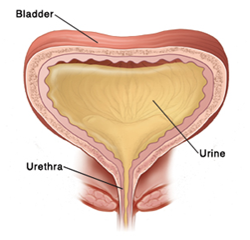
There are five types of urinary incontinence
Stress, Urge, Overflow, Functional and Mixed.
- If you have bladder leakage when you cough, laugh, sneeze or exercise, that's stress incontinence;
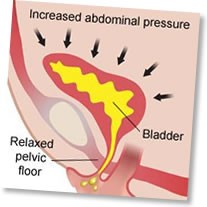
- Urge incontinence is the involuntary loss of urine following a strong, unexpected urge to urinate due to involuntary bladder spasms;
- Overflow incontinence is "false" incontinence associated with urinary retention, where the bladder does not empty completely;
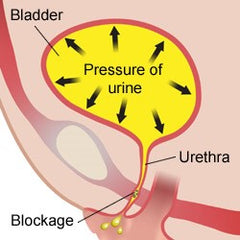
- Functional incontinence happens when a person cannot get to the toilet in time because of mobility or memory issues;
 and
and - Mixed incontinence is any two of the types of incontinence above.
Who are Nurses Specialized in Wound, Ostomy and Continence?
 Formerly known as Enterostomal Therapy nurses, NSWOCC's are Registered Nurses recognized by the Canadian Nurses Association as nurses with advanced and specialized knowledge and clinical skills in wound, ostomy and continence care.
Formerly known as Enterostomal Therapy nurses, NSWOCC's are Registered Nurses recognized by the Canadian Nurses Association as nurses with advanced and specialized knowledge and clinical skills in wound, ostomy and continence care.
What can NSWOCC nurses do to help you?
NSWOCC nurses can meet with you one-to-one to talk with you and do simple tests to help you figure out what kind of incontinence you have.
They can teach you about bladder health and conservative methods for your specific continence problem. They can refer you to another health care professional for more complex assessment and / or treatment.
They can help with skin care: constant moisture can lead to red, sore skin.
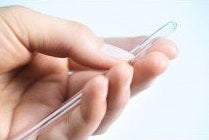 If you cannot empty your bladder completely (urinary retention) your doctor may have prescribed emptying the bladder by inserting a tube into it.
If you cannot empty your bladder completely (urinary retention) your doctor may have prescribed emptying the bladder by inserting a tube into it.
NSWOC or Enterostomal Therapy nurses can teach you how to do this safely and as easily as possible.
How can you find an NSWOC or ET nurse?
Nurses Specializing in Wound, Ostomy and Continence Care or ET nurses work in hospitals, outpatient clinics, long term care and home care. Visit their national association website - Nurses Specialized in Wound, Ostomy and Continence Canada (NSWOCC) - and click on Find a NSWOC on the main page to enter your information. Or, call 888-739-5072.
They can can help by providing decision aids
Decision aids are tools to help you understand your options and associated outcomes. As an example, if a person is faced with a choice about types of catheters, such as choosing between:
- An 'intermittent' catheter, where the catheter is temporarily inserted into the bladder and removed once the bladder is empty; or
- An 'indwelling' catheter, where the catheter stays in place for many days or weeks,
Decision aids can help that person make the right choice for his / her situation. Decision aids help decide which you approach should chose, and to help you know if it's right choice for you.
An NSWOC nurse can help you to:
- Define the decision which has to be made
- Provide information about options and outcomes
- Clarify personal values, and
- Help you talk to your health care professional(s).
An Nurse Specializing in Wound, Ostomy and Continence Care nurse could help you talk through how do your bladder problems affect you. Here's an example a self questionnaire they might provide you with.
Assume your NSWOCC nurse asked "how do your bladder problems affect you?", and asked you to score each item below from zero to 4, where: Never = 0, Rarely = 1, Sometimes = 2, Often = 3, Always = 4:
- I stay at home
- I need to wear a pad
- My skin is red and sore
- My sleep is interrupted
- I have had bladder infections
- I avoid intimacy
My total score (out of 24) is: _______.
Example decision: “Is Intermittent Self- Catheterization the Right Choice For You?”
 An Nurse Specializing in Wound, Ostomy and Continence Care nurse can help you identify the problem (condition); could help provide an understandable, and short definition of self catheterization, and could provide a brief a brief description of the urinary system to help you understand your situation more clearly.
An Nurse Specializing in Wound, Ostomy and Continence Care nurse can help you identify the problem (condition); could help provide an understandable, and short definition of self catheterization, and could provide a brief a brief description of the urinary system to help you understand your situation more clearly.
Self-Catheterization Advantages
- You get to plan when and where to empty your bladder (4-6 times a day);
- Bladder and kidney damage will be prevented;
- Urine infections will be decreased;
- Urine leakage will be controlled, reducing skin problems, smell and the need for pads;
- Frequent need to pass urine will stop;
- There is no need for any tubes or bags between catheterizations (unlike when using a Foley or indwelling catheter);
- Doing self-catheterization before going to bed and first thing in the morning may allow for a better sleep.
- Frequent need to pass urine will stop;
- There is no need for any tubes or bags between catheterizations (unlike when using a Foley or indwelling catheter)
- Doing self-catheterization before going to bed and first thing in the morning may allow for a better sleep.
Self-Catheterization Disadvantages
- You may find it hard to insert the catheter;
- You will have an ongoing cost for supplies;
- All bathrooms may not be suitable for doing self-catheterization;
- You could still get a bladder infection.
The Decision
- Do I know why self-catheterization has been suggested as an option for me?
- Will self-catheterization help me?
- Will I be able to self-catheterize?
- Do I understand the advantages and disadvantages of self-catheterization?
- Do I have enough information and support to make a decision?
- Is there anything else that I need to know?
- Do I want to learn self-catheterization?
What if I want more information?
Visit the Nurses Specialized in Wound, Ostomy and Continence Canada (NSWOCC) association website and scroll down to the "For Patients" section to find resources.
- Cindy Clegg
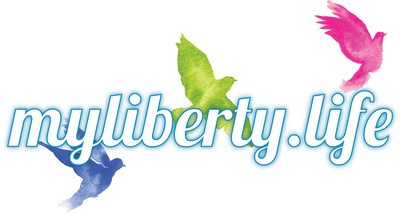


 and
and
Comments 0